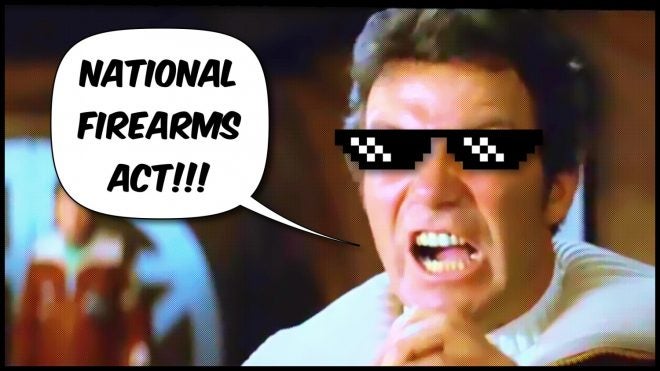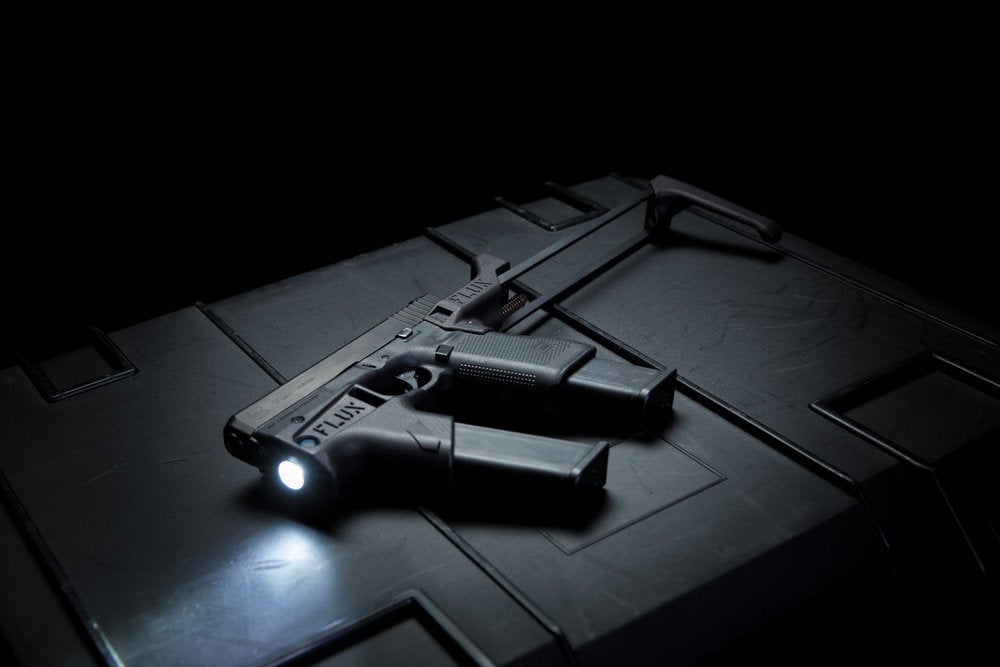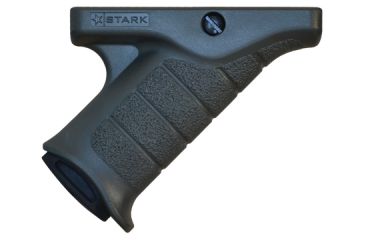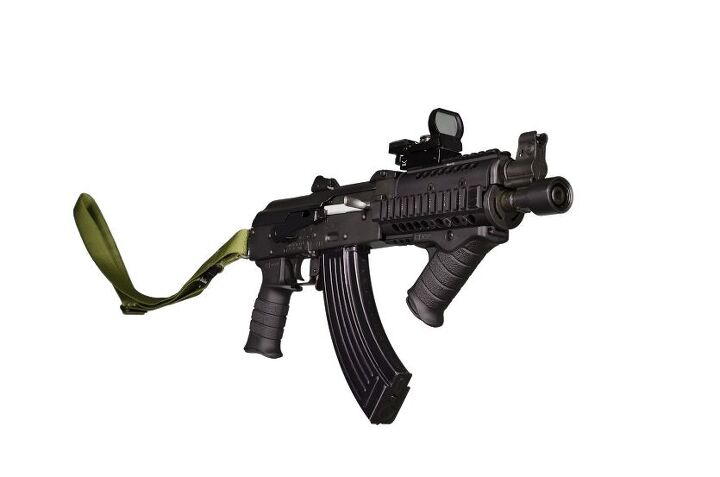In the past few years, we have drilled down into the netherworld of NFA laws, attempting to determine the subtle differences between short barreled rifles (SBRs), Any Other Weapons (AOWs) and simply firearms. We’ve also reviewed the new ATF accessory classification process and gone over the use of the ATF eForm system that anyone can use to apply for “makers” NFA tax stamps. So we won’t be rehashing every minutia of firearms regulations in the U.S. But let’s discuss pistols, rifles, short barrels and braces – a small attempt to understand the NFA.
VFGs, AOWs, PSBs and SBRs: A Return To Understanding The NFA
One of the aspects of the NFA that bothers me the most is the ‘moving target’ situations we all find ourselves considering when accessory shopping. Because the laws don’t spell out every small characteristic that changes a Title I Firearm into a Title II Firearm, ATF examiners (or the internet) are left to provide guidance on an array of SBR and AOW setups.
However, the rapid growth of the pistol stabilizing brace (PSB) market has created more questions than anyone has answers. Such as, “when is a PSB actually a stock” and “when does installing a foregrip on a pistol create an ‘Any Other Weapon’ (AOW)”? All of that informed decision-making requires at least some basic understanding of the NFA.
But first, let’s get a few things straight:
- The National Firearms Act is hot garbage. It does nothing to protect Americans. That’s my opinion.
- The National Firearms Act is the law of the land. That’s a fact.
- I am not a lawyer. I am not an ATF examiner. None of what is discussed here should be considered guidance, legal or otherwise.
- When in doubt, contact the NFA Divison of the ATF for additional information.
It used to be that a pistol was a pistol, a rifle was a rifle and an SBR was actually a rifle controlled by the NFA. But with braces being added to small pistols and other unconventional setups, I thought a deeper discussion was in order.
The FLUX LIGHTMAG is a patent-pending light and carrier. It’s also holsterable! It was neither designed nor intended to be a vertical foregrip.
It does not turn your pistol into an AOW/SBR as it is not a vertical foregrip. It is not a foregrip at all. If it were ever to be considered an angled foregrip, remember it is legal to put an angled-foregrip on a pistol. (different angle than 90 degrees perpendicular to the bore) See various ATF letters online regarding angled foregrips.
ATF Pistol Definition
What defines a pistol?
Under an implementing regulation of the National Firearms Act (NFA), 27 C.F.R. § 479.11, “pistol” is defined as:
… a weapon originally designed, made, and intended to fire a projectile (bullet) from one or more barrels when held in one hand, and having (a) a chamber(s) as an integral part(s) of, or permanently aligned with, the bore(s); and (b) a short stock designed to be gripped by one hand and at an angle to and extending below the line of the bore(s).
ATF AOW Definition
What defines an Any Other Weapon?
The NFA further defines the term “any other weapon” (AOW) as:
… any weapon or device capable of being concealed on the person from which a shot can be discharged through the energy of an explosive, a pistol or revolver having a barrel with a smooth bore designed or redesigned to fire a fixed shotgun shell, weapons with combination shotgun and rifle barrels 12 inches or more, less than 18 inches in length, from which only a single discharge can be made from either barrel without manual reloading, and shall include any such weapon which may be readily restored to fire. Such term shall not include a pistol or revolver having a rifled bore, or rifled bores, or weapons designed, made, or intended to be fired from the shoulder and not capable of firing fixed ammunition. 26 U.S.C. § 5845(e).
ATF has long held that by installing a vertical fore grip on a handgun, the handgun is no longer designed to be held and fired by the use of a single hand. Therefore, if individuals install a vertical fore grip on a handgun, they are “making” a firearm requiring registration with ATF’s NFA Branch.
Seems pretty clear, right? Not so fast, let’s take a look at some case law.
Understanding The NFA – U.S. v. Davis
In the case of US v. Davis, the court ruled that a pistol with a vertical foregrip is not an Any Other Weapon because it’s still a pistol:
25. Title 26, United States Code Section 5845(e) defines “any other weapon” as:
… any weapon or device capable of being concealed from which a shot can be discharged through the energy of an explosion
… Such term shall not include a pistol or revolver having a rifled bore, or rifled bores, or weapons designed, made or intended to be fired from the shoulder and not capable of firing fixed ammunition.
26. A “pistol” is defined in Section 5845 as
A weapon originally designed, made and intended to fire a projectile (bullet) from one or more barrels when held in one hand, and having (a) a chamber(s) as an integral part(s) of or permanently aligned with, the bore(s); and (b) a short stock designed to be gripped by one hand and at an angle to and extending below the line of the bore(s). 27 CFR 178.11(emphasis added).
27. Even after being modified with grips, the pistols are still “pistols” as defined above and not “any other weapon” as defined by 26 U.S.C. section 5845(e).
Understanding The NFA: U.S. v. Black
But the case of U.S. V. Black, the court ruled that installing a vertical foregrip on a pistol constitutes making an NFA item.
In sum, at the time of his arrest, Black was in possession of a Romarm, Draco
7.62 caliber pistol with a vertical foregrip, which was no longer intended to be held and
fired with one hand. Consequently, the Romarm is not a pistol, and does qualify for the
sentencing enhancement as “any other weapon.” 26 U.S.C. § 5845(e).We turn now to the only issue in the case that requires more extended discussion. Black argues that one of the weapons he was convicted of possessing, a Romarm, Draco 7.62 caliber pistol, does not come within the sentencing enhancement for certain specified weapons under the National Firearms Act (NFA), 26 U.S.C. § 5845(e). Specifically, the NFA contains a list of certain weapons that trigger a sentencing enhancement; it also contains a catchall clause that triggers the enhancement for the possession of “any other weapon.” 26 U.S.C. § 5845(e). The latter category, however, expressly excludes a “pistol.”
Notwithstanding the well understood definition of a pistol, Black attempts to restrict the definition of a pistol to the time when it was originally manufactured. Specifically, when the weapon at issue here was originally made, it was intended to be fired with one hand and was only later modified by the addition of a vertical foregrip – a stabilizing grip that was attached to the front of the firearm so that it could be fired using two hands to improve accuracy and counter recoil. While such a weapon comes within the definition of “any other weapon” and would justify the sentencing enhancement to which he was subject, Black argues that the nature of the weapon at the time that he was arrested for possessing it is not controlling.
We decline to follow this unpublished decision, even if it arguably construed the Code of Federal Regulations (“CFR”) provision at issue in a plausible way. The responsibility for the enforcement of 26 U.S.C. § 5845(e) has been removed from the Secretary of the Treasury and placed in the hands of the Bureau of Alcohol, Tobacco, Firearms, and Explosives (“ATF”) of the Department of Justice (“DOJ”). The latter, in turn, has adopted an interpretation different from that of the Ninth Circuit. Specifically, the DOJ has construed the CFR in a way that is consistent with the plain language of the statute and the common definition of a pistol as a short firearm intended to be fired with one hand. In particular, it relies on the CFR’s definition of “made,” which includes “putting together, altering, any combination of these, or otherwise producing a firearm.” 27 CFR § 479.11 (emphasis added); See also 26 U.S.C. § 5845(i). The DOJ then reads the definition of a “pistol” so that it applies to firearms that are “originally designed, [altered], and intended” to be fired with one hand. 27 CFR § 479.11. Significantly, as early as 2006, the DOJ advised that:
ATF has long held that by installing a verticalforegrip on a handgun, the handgun is no longer designed to be held and fired by the use of a single hand. Therefore, if individuals install a vertical fore grip on a handgun, they are ‘making’ a firearm requiring registration with ATF’s NFA Branch.
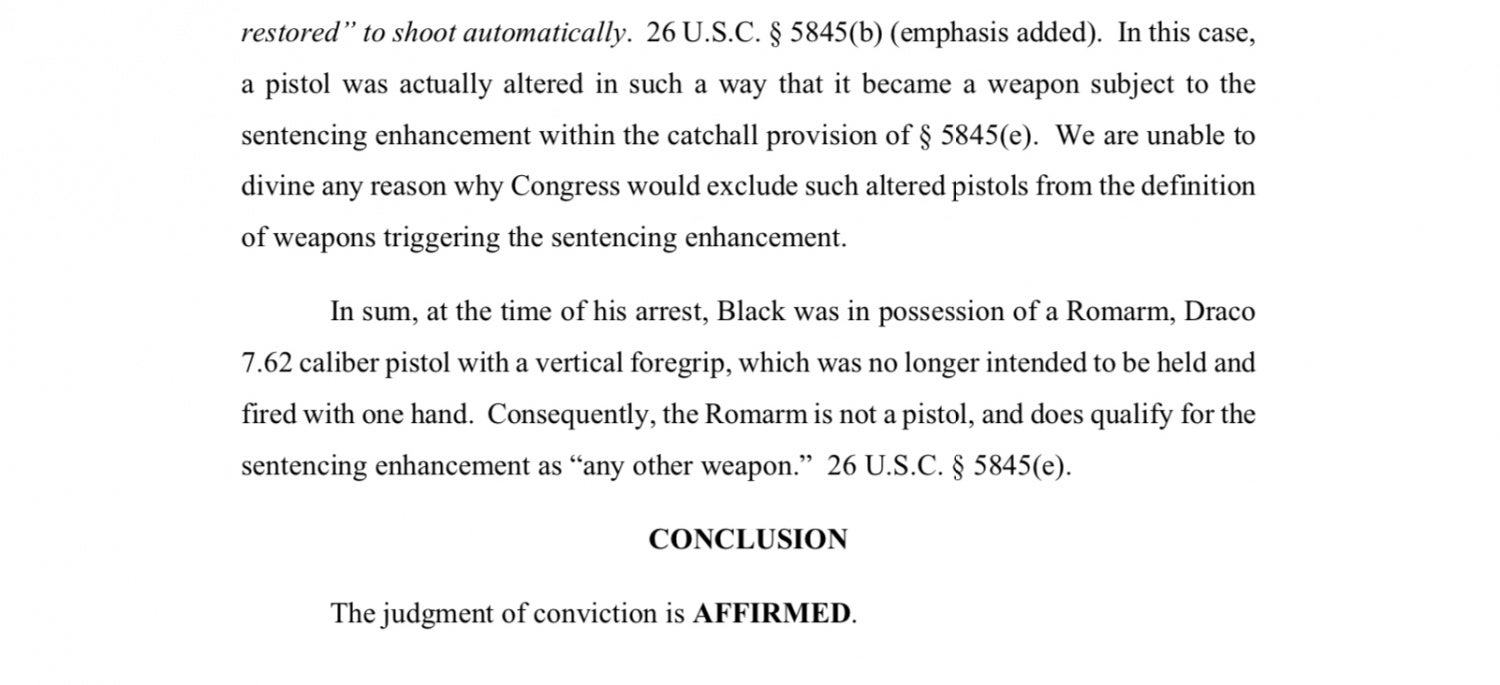
Stupid Draco – gets you every time.
Understanding The NFA – Flux Brace:
We reached out to the manufacturers of the Flux Brace and the Flux Lightmag for comment on NFA regulations as applied to pistol stabilizing braces and vertical (and angled) foregrips. They write:
First off, we do not offer legal advice. We have consulted with various firearm lawyers about these products. (Alex Kincaid has a great video regarding ATF letters and braces) There are currently no federal laws outlawing the use of pistol braces. This is why it is legal to attach a pistol brace to a pistol, not because of a guidance letter sent to a specific someone for a specific scenario from the ATF.
FLUX Brace:
Pistol braces are legal. The Flux Brace is designed as a pistol brace for a pistol. It is neither designed nor intended to be a stock. ATF brace letters are often misunderstood. Most letters actually only specify approval for the recipient and that specific firearm, and yet in practice the braces are used on many different types of pistols such as ARs, PDWs, and handguns (Glocks). If you are going off letters for approval the ATF would essentially have to issue thousands of letters covering each brace on each possible weapon it could be placed on.
It is more important that the product is designed and manufactured as a brace and not as a stock. Remember, there are already other braces designed for and/or being used on Glocks and other handguns and these do not have specific ATF letters for those weapons. It doesn’t matter if braces are not normally found on handguns or pistols or any other type of firearm, nor does it matter if the brace is necessary, as braces aren’t necessary on any firearm.
In fact, most recent braces don’t have a specific letter, including those for ARs, as well as the various braces designed for other pistols. Companies will refer you to their old letters on old products. Why? Because asking the ATF to evaluate every new brace model on every single firearm is impractical.
LIGHTMAG:
As far as the LightMag goes, it is not a fore-grip. It is a light and mag carrier. It is neither designed nor intended to be used as a fore-grip. There is no designed texture for gripping and the hand stop is only to keep your hands below the muzzle while pushing the on/off button or removing the mag.
Even if it were somehow deemed a fore-grip, the ATF has repeatedly stated that angled fore-grips are legal to attach to pistols, and that so long as it is not perpendicular to the bore (90 degrees), it is not a vertical grip and is legal to attach to pistols. Please see the Stark AFG ATF letter and pictures, in which it is clearly stated by the ATF
Understanding The NFA: The Stark Equipment Corp. AFG
The foregrip in question from Stark Equipment Corp is definitely angled, but at what point does an angled grip become a vertical grip?
That question has been debated for years since major manufacturers have introduced dozens of styles of angled foregrips that are used on firearms such as AR15 pistols. The designs run the gamut from “I swear that is perfectly vertical” to “this is basically a flat hand stop”. A letter issued in 2013 to an individual, shows the ATF determined the Stark SE-5 to be angled, not vertical and would not constitute making an AOW.
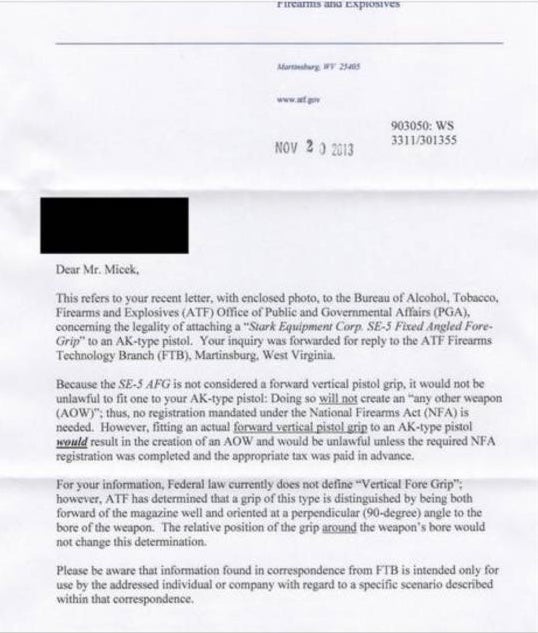
Credit: Micek and unknown sources.
The “ATF has determined that a grip of this type is distinguished by being both forward of the magazine well and oriented at a perpendicular (90-degree) angle to the bore of the weapon” statement has caused frequent and continued debate. If the definition of vertical as it pertains to grips is 90 degrees, can all the non-90 degree fore grips on the market be installed on pistols and not create a taxable event?
Understanding The NFA: Braces On Small Pistols
What about pistol stabilizing braces, blades or other “non-stocks” on smaller firearms? Can traditional pistols be stabilized?
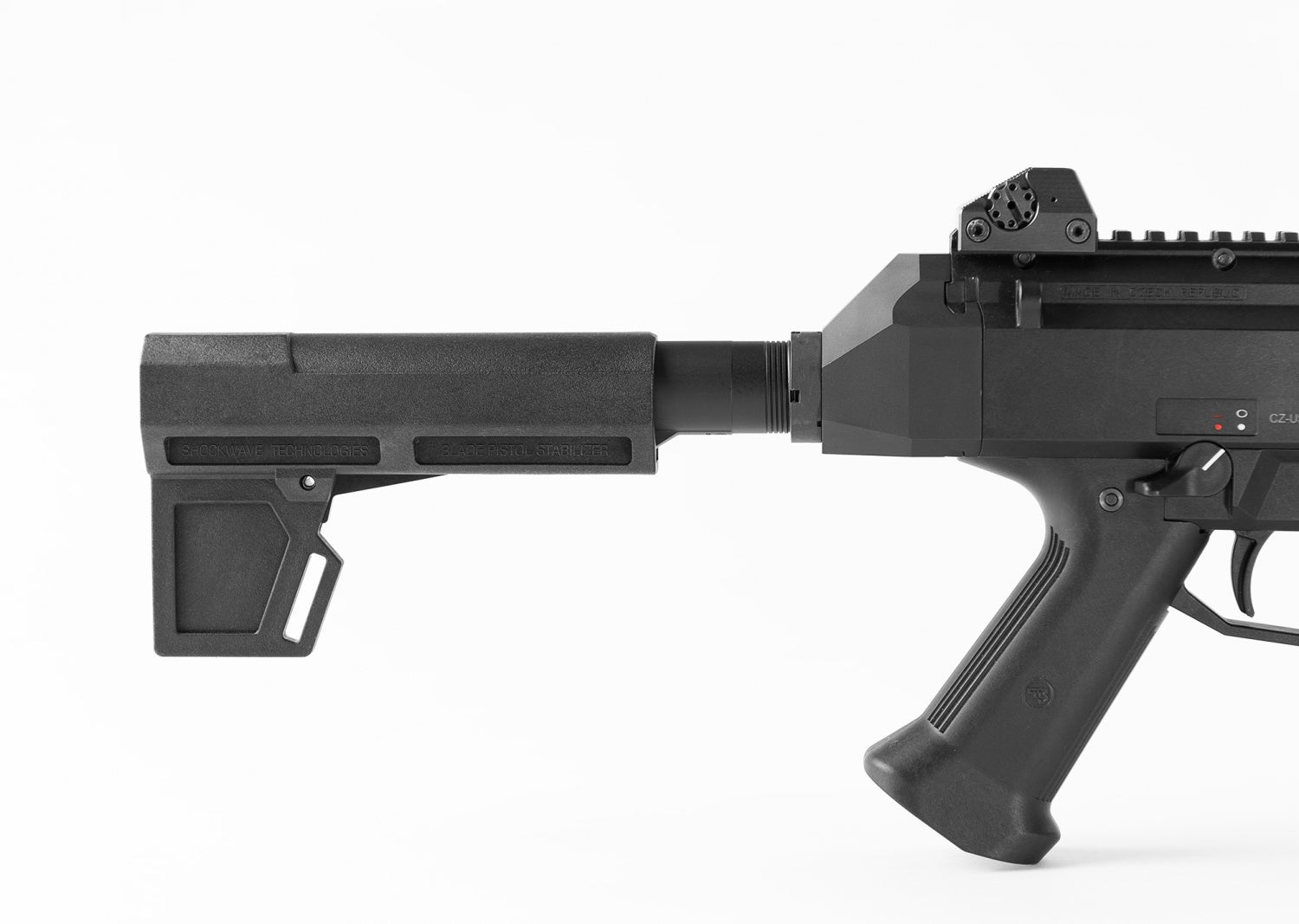
Credit: Shockwave Technologies
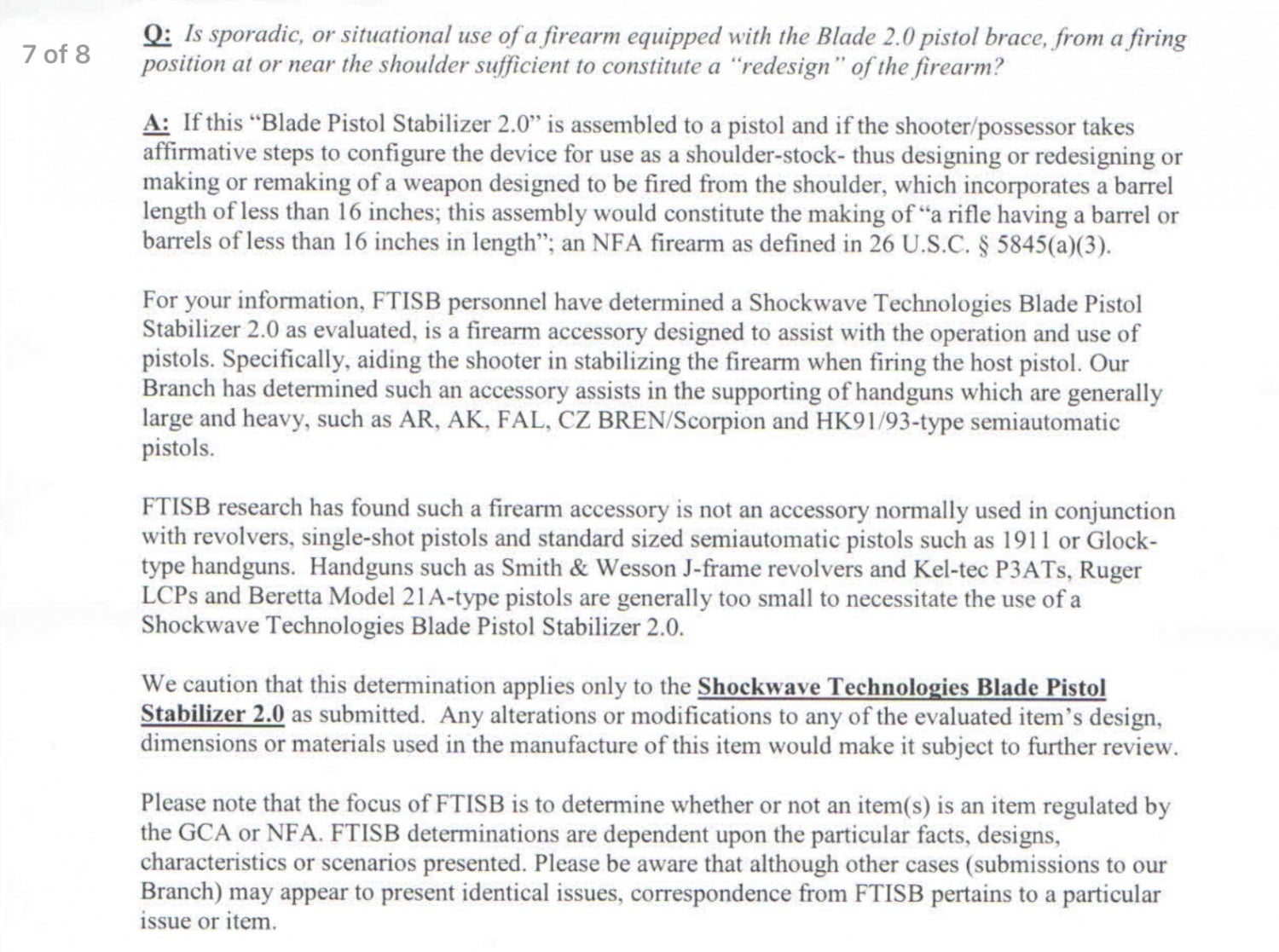
Credit: Shockwave Technologies
The third to the last paragraph is less than definitive. “Not an accessory normally used in connection with revolvers, single shot pistols and standard sized semiautomatic pistols such as 1911 or Glock-type handguns” isn’t exactly a blessing, but is it a disapproval? The rest of the paragraph seems to go a little farther with even smaller pistols, stating they are “generally too small to necessitate the use…”. Not to mention that the next paragraph specifically states that the determination letter specifically applies only to the Shockwave Technologies Blade Pistol Stabilizer 2.0, so it cannot be applied to other makes and models.
Understanding The NFA: “Conclusions”
There are those of you who will think that I am asking too many questions and that blissful ignorance is a path to avoiding NFA restrictions. While other, more conservative shooters may be more happy to discuss potential pitfalls of adding accessories that may have NFA implications. Well, you’ll be happy to know you are both right.
As I said at the beginning of this piece, none of what is written here should be considered guidance. My only advice is this: Much like personal defense, in the end, you are the only one responsible for your own safety and security. Weigh your choices carefully. Analyze the worst case scenarios. What are the benefits of your setup?
While the laws and regulations surrounding the NFA are murky and inherently unfair, individual liberties are a double edge sword.
Repeal the NFA. – My opinion.
The NFA is the law. – Fact.
 Your Privacy Choices
Your Privacy Choices
